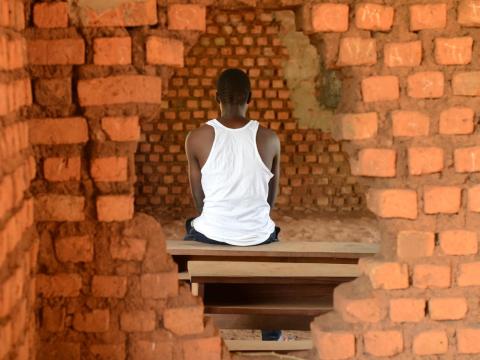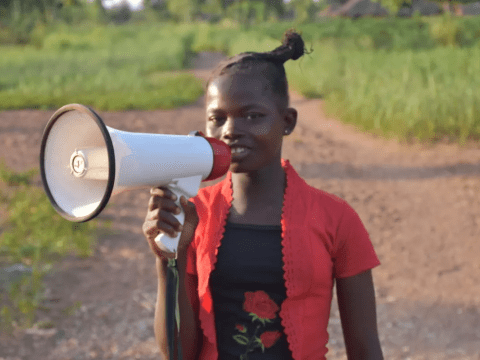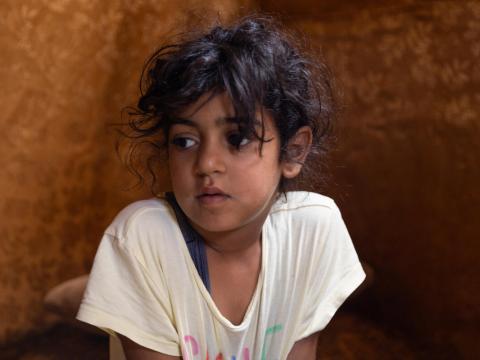
Five surprising ways war can harm children
Mark lays out some of the lesser-known dangers to children affected by the conflict in Ukraine, Sudan and in all the other active conflict zones around the globe.
Update 5 August, 2024.
No child should have to experience the horrors of war, but so many do. As of 2018, 468 million children (more than one in six children in the world) were living in conflict-affected contexts. [1] The effects upon children of living with violent conflict are numerous, devastating, and not always obvious. Here are five you might not have considered:
Long-term learning
We know that war impacts children’s access to education, but it also hampers their learning from the earliest stages of life. Children in many parts of Syria, at war for nearly 11 years now, are sometimes described as a ‘lost generation’ when it comes to schooling. But research shows that, when a pregnant woman is subject to violence, it can have an impact upon the unborn child’s physical and cognitive development. There is evidence that this affects the individual’s educational progress more significantly even than being exposed to violence directly in later years.
Personality change
For the youngest children, exposure to violent conflict can produce long-term ill-effects. Healthy emotional development relies upon us knowing that we can trust our parents and caregivers to protect us from harm and meet our basic needs, which is the basis for secure attachment and growing independence. But war instills in countless young children – either through the violent death of a parent, through physical injury, or the loss of safe spaces to sleep and play – the fear that nobody can in fact protect them. This can lead to extremes of anxious avoidance or of risk-taking behaviour, as well as to depression, sleeplessness and other symptoms of post-traumatic stress disorder. This in turn impacts upon children’s ability to pursue their needs (for support or resources) later in life, which can in turn impact upon their mental health, creating a vicious cycle of marginalisation.
Moreover, for disabled children, the impacts can be amplified, as they are more at risk of abandonment and of losing services essential to meeting their fundamental needs.
Exploitation
Many images of war portray children as unintended victims, as ‘collateral’ of armed conflict, but the troubling fact is that children are often targets during wartime, at risk of exploitation. Social and state protections are likely to be at their weakest. Parents may be killed or injured, or they may be impoverished and unable to protect and provide for their young. In such contexts, children or their caregivers may come to entertain risks they see as preferable to other immediate dangers. This could include pledging a young girl to be married in return for money, imposing an early marriage on a child or accepting the invitation (or financial inducement) of a third party who promises to meet the child’s needs. Often a child will, in this way, become a labourer, or worse, become trafficked, sexually exploited, or sent to fight as a combatant.
Self-blame
Child soldiers are of course at particular risk of physical injury and death, but also of sexual and emotional abuse. If they survive the conflict itself, they may be detained as perpetrators rather than victims, compounding the psychosocial impacts of their exploitation. Indeed, child soldiers tend to exhibit more symptoms of mental ill-health than children who have experienced otherwise similar levels of trauma as non-combatants. In this and other kinds of exploitation, it is common for a child to become uncertain about their status as victims, often leading to self-blame, and long years of dealing with unhealthy relationships with themselves and others. This is especially difficult where children have participated in atrocities.
‘Post-conflict’ marginalisation
In an article called 'When war is better than peace,' Denov and Lakor write about children born of wartime rape in Uganda, and the stigma they endured in the so-called ‘post-conflict’ period. They describe, "debilitating forms of stigma, violence, socio-economic marginalization, and social exclusion that have a long-term impact their sense of belonging, identity and well-being". There is an urgency about ending outright hostilities, but this extreme (though not uncommon) example reminds us that experiences of war can affect children long after wars are over.
For this reason, we strive to address the causes of violent conflict wherever we can, and we pray for peace, because it is children who so often bear the brunt of adults’ failures to negotiate their competing interests.
Mark Calder is World Vision UK's Senior Conflict and Humanitarian Policy Advisor . He is an experienced advocacy and engagement professional with a background conducting social research in the Middle East. Mark is passionate about connecting development practice with scholarship and research.
___________
Image: Seventeen-year-old Yuda is one of 700 children in South Sudan who is part of a World Vision run reunification and reintegration programme for children formerly associated with armed groups.
[1] New Figures: 468 Million children live in conflict zones (savethechildren.org.uk)

